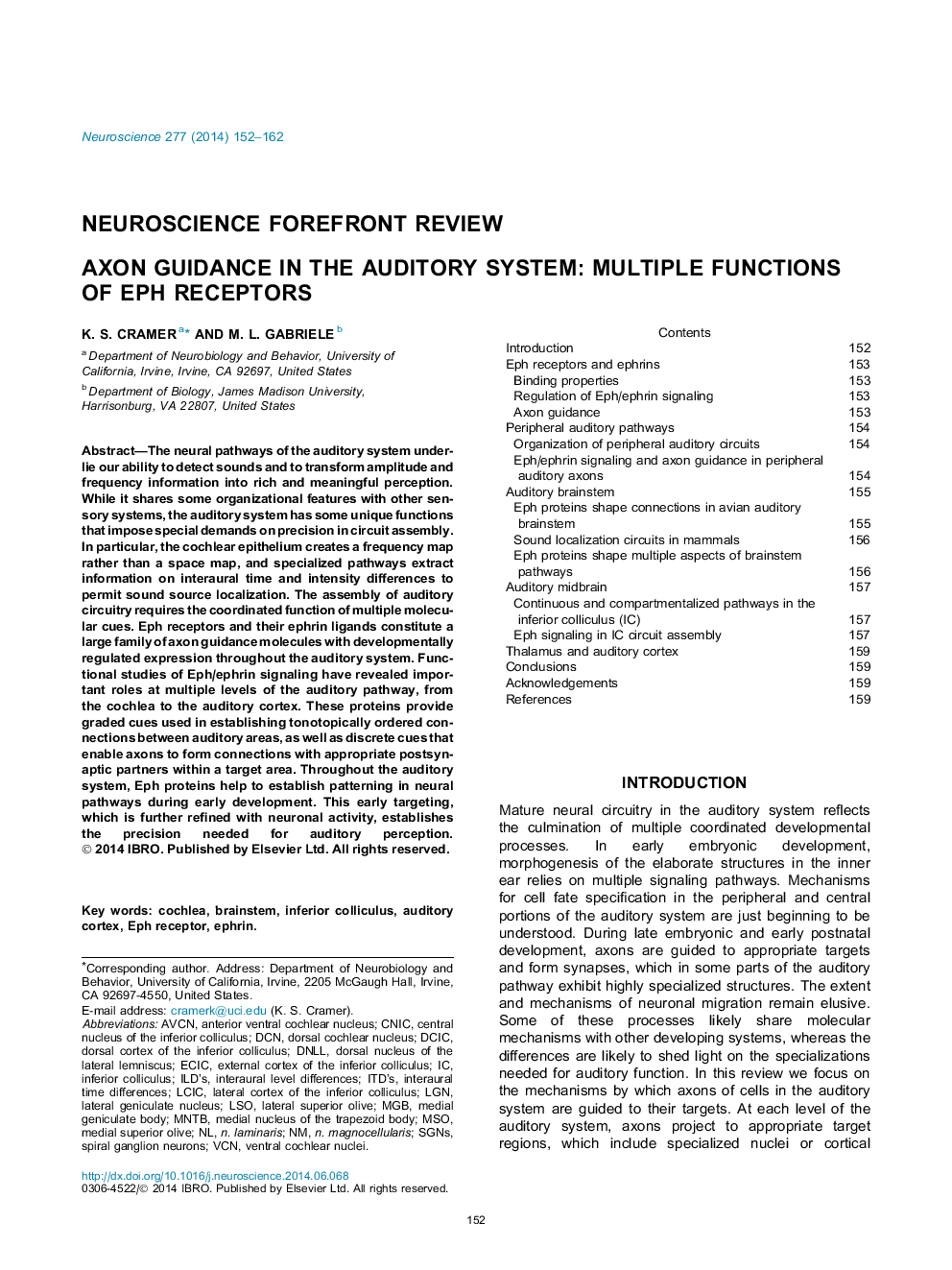| Article ID | Journal | Published Year | Pages | File Type |
|---|---|---|---|---|
| 6273543 | Neuroscience | 2014 | 11 Pages |
â¢Eph proteins provide complex signaling capabilities during circuit formation.â¢Axon guidance at multiple levels of the auditory system is mediated by Eph proteins.â¢Auditory areas receive both graded and discretely organized inputs.â¢Eph proteins specify graded and discrete locations within auditory target areas.
The neural pathways of the auditory system underlie our ability to detect sounds and to transform amplitude and frequency information into rich and meaningful perception. While it shares some organizational features with other sensory systems, the auditory system has some unique functions that impose special demands on precision in circuit assembly. In particular, the cochlear epithelium creates a frequency map rather than a space map, and specialized pathways extract information on interaural time and intensity differences to permit sound source localization. The assembly of auditory circuitry requires the coordinated function of multiple molecular cues. Eph receptors and their ephrin ligands constitute a large family of axon guidance molecules with developmentally regulated expression throughout the auditory system. Functional studies of Eph/ephrin signaling have revealed important roles at multiple levels of the auditory pathway, from the cochlea to the auditory cortex. These proteins provide graded cues used in establishing tonotopically ordered connections between auditory areas, as well as discrete cues that enable axons to form connections with appropriate postsynaptic partners within a target area. Throughout the auditory system, Eph proteins help to establish patterning in neural pathways during early development. This early targeting, which is further refined with neuronal activity, establishes the precision needed for auditory perception.
